Discover 11 hidden attractions, cool sights, and unusual things to do in Stafford (United Kingdom). Don't miss out on these must-see attractions: Shugborough Hall, St Mary's Church, and Shire Hall. Also, be sure to include Stafford Castle in your itinerary.
Below, you can find the list of the most amazing places you should visit in Stafford (England).
Table of Contents
Shugborough Hall
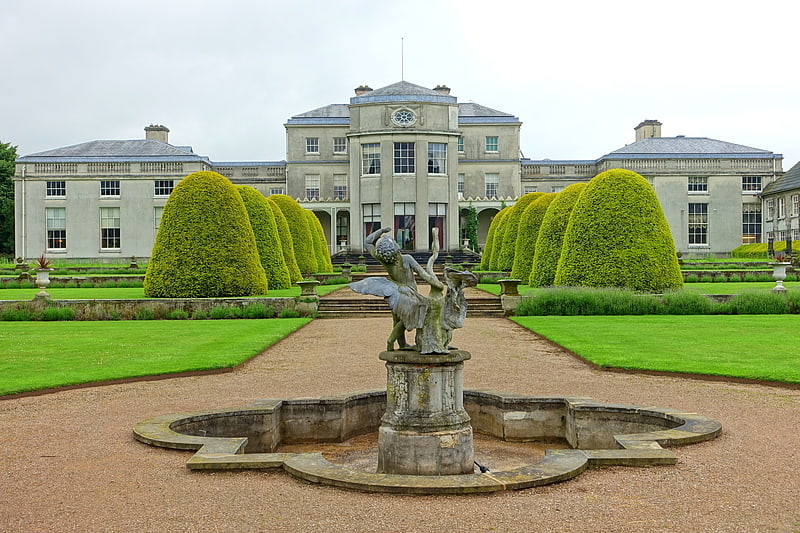
Stately home in Great Haywood, England. Shugborough Hall is a stately home near Great Haywood, Staffordshire, England.
The hall is situated on the edge of Cannock Chase, about 5.8 miles (9.3 km) east of Stafford and 4.7 miles (7.6 km) from Rugeley. The estate was owned by the Bishops of Lichfield until the Dissolution of the Monasteries, upon which it passed through several hands before being purchased in 1624 by William Anson, a local lawyer and ancestor of the Earls of Lichfield. The estate remained in the Anson family for three centuries. Following the death of the 4th Earl of Lichfield in 1960, the estate was allocated to the National Trust in lieu of death duties, and then immediately leased to Staffordshire County Council. Management of the estate was returned to the National Trust in 2016. It is open to the public and comprises the hall, museum, kitchen garden and a model farm.[1]
Address: Shugborough Estate, A513 Stafford to Lichfield road, Milford, Stafford
St Mary's Church
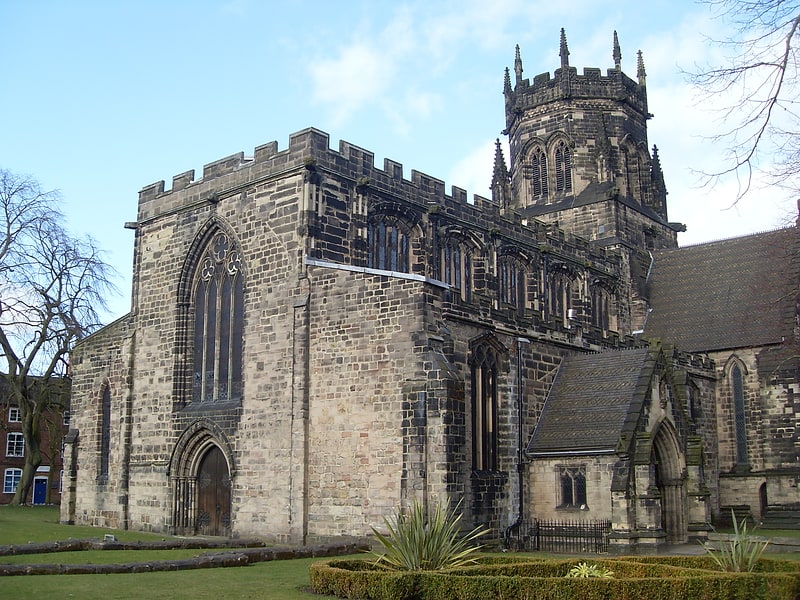
St Mary's Church, Stafford is a Grade I listed parish church in the Church of England in Stafford.[2]
Shire Hall
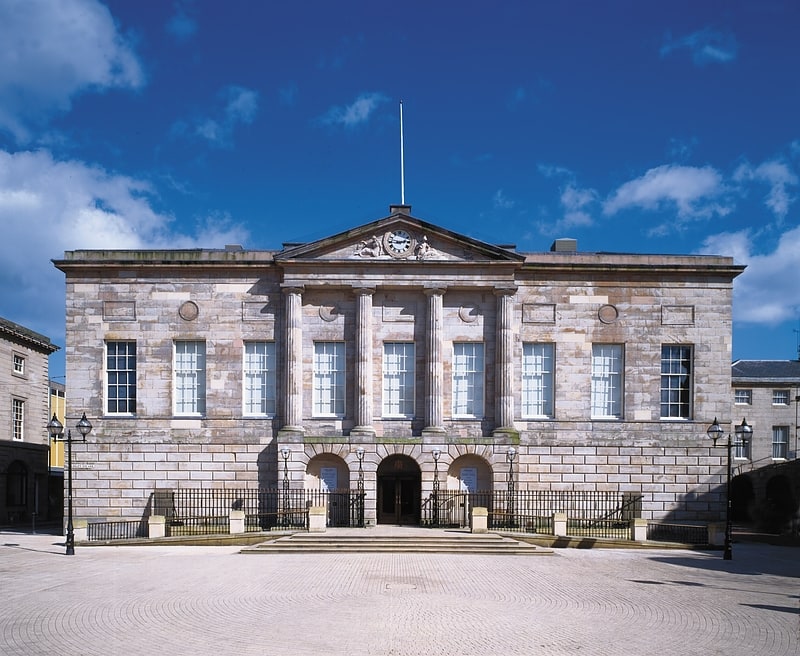
Art gallery in Stafford, England. The Shire Hall is a public building in Stafford, England, completed in 1798 to a design by John Harvey. Formerly a courthouse, it housed an art gallery which closed to the public in July 2017. The court rooms and cells are preserved. The building, its interiors, and the associated street furniture were grade II* listed on 17 December 1971, when it was described as "One of the finest public buildings in Stafford".[3]
Address: Shirehall Market Square, ST16 2LD Stafford
Stafford Castle
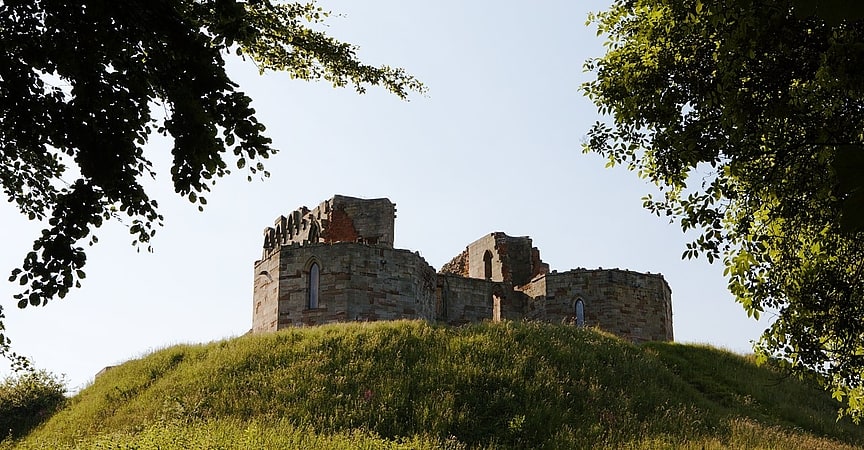
Castle in Stafford, England. Stafford Castle is an ancient Grade II listed castle situated two miles west of the town of Stafford in Staffordshire, England. From the time of the Norman Conquest and as recorded in the Domesday Book of 1086 it was the seat of the powerful Anglo-Norman Stafford family, feudal barons of Stafford, later Barons Stafford by writ, Earls of Stafford and Dukes of Buckingham. The 14th-century stone keep was demolished in 1643, during the Civil War, having been held for the Royalists by Lady Isabel Stafford. The castle was remodeled in the early 19th century by the Jerningham family in the Gothic Revival style, on the foundations of the medieval structure, and incorporates much of the original stonework. Today the A518 Stafford-to-Newport Road passes next to it and it is a prominent local landmark visible from the M6 motorway and from the West Coast inter-city mainline.[4]
Address: Newport Rd., ST16 1DJ Stafford
Norbury Junction

Norbury Junction is a canal junction which lies about 1 mile to the south east of Norbury, in Staffordshire, England. It opened in 1835, and closed in 1944, although the main line of the Shropshire Union Canal still runs through it.[5]
Address: The Junction Inn, Stafford
St Chad's Church
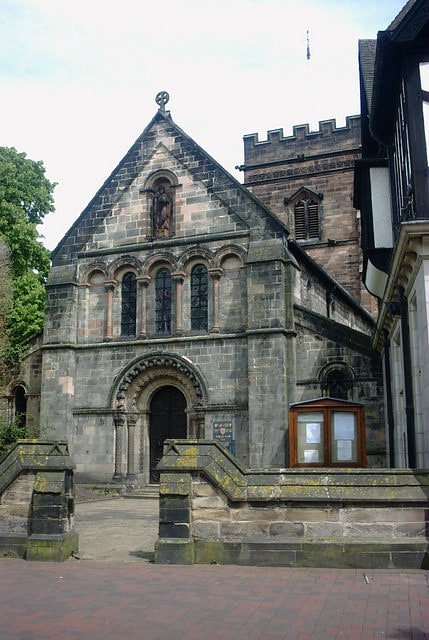
Anglican church in Stafford, England. St Chad's Church, on Greengate Street in the centre of Stafford, is a Grade II* listed Anglican church. Saint Chad, who died in 672, was the first Bishop of Lichfield. The church was built in the 12th century, and is the oldest building in Stafford.
The church was neglected in the 17th and 18th centuries, and much of the Norman architecture was obscured; there was much restoration work in the mid 19th century, particularly by George Gilbert Scott.[6]
Address: Greengate St, ST16 2HP Stafford
Stafford Castle Golf Club
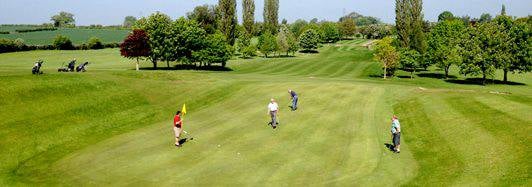
Golf, Historical place, Forts and castles
Address: 2 Castle Cottages Newport Road, ST16 1DN Stafford
Ancient High House
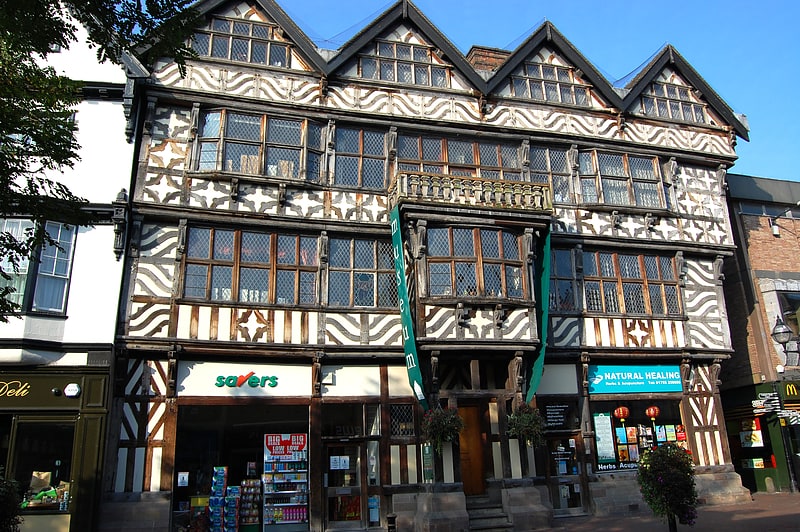
Building in Stafford, England. The Ancient High House is an Elizabethan town house located on the main street in Stafford. The house was constructed in 1595 by the Dorrington family, from local oak, which anecdotally came from the nearby Doxey Wood, and is the largest timber framed town house in England.
Many of the original timbers bear carpenter's marks indicating that the frame was pre-assembled on the ground and the joints numbered to aid the on-site construction. Some timbers have additional joint housings cut into them, which would suggest that they have been reused from an even earlier structure. It was not unheard of for a building to be dismantled and rebuilt at a different location - hence the expression to 'up-sticks', which means to move house.
At the time of the outbreak of the English Civil War, a member of the Sneed family of Keele Hall, near Newcastle-under-Lyme, was renting the building.
Charles I visited Stafford and stayed at the Ancient High House on 17 and 18 September 1643, not long after raising the Royal Standard at Nottingham, the feudal signal to call his loyal subjects to arms - this act was seen as the start of the English Civil War.
Having made the High House his temporary headquarters, the King talked to his advisers and dictating letters and military orders for the forthcoming campaign (some of these have been preserved in the nearby William Salt Library). While in Stafford the King attended St Mary's Collegiate Church, an account being made by a local woman for the strewing of flowers along his route to the church.
There is a story that while walking in the garden of the High House with the King, Prince Rupert fired two shots through the tail of the weather vane of St Mary's in order to demonstrate the accuracy of a continental Horse Pistol. The weather vane was removed several centuries ago, and so the story cannot be verified, although the pistol Prince Rupert is said to have fired was far more accurate than most of the weapons then in use.
In May 1643, the King's enemies, the Parliamentarians, captured the town and in the following January, the newly established Committee of Stafford ordered:
that the High House of Mr Dorringtons in tenure of Mr Lees shall be forthwith assigned to Mr Roberts the Provost Marshal to habite in for the securing of the better sort of prisoners...
These prisoners were Royalists.
The main room of the house would have been the central room on the first floor, and it is here that guests, including King Charles I and Prince Rupert, would have been entertained. Today a tableau represents the scene during the visit of the King who stayed as a guest of Captain Richard Sneed. The King was accompanied by his nephew, Prince Rupert of the Rhine (and his Standard Poodle called 'Boy'), who was already an accomplished military commander.
The structure was weakened by renovations to the ground floor in the 19th century. This work included the knocking-through of a stone fireplace to create a corridor and the removal of one of the corner posts, which lead to a splaying of the overhanging upper storeys. A second chimney was demolished to create more space, this taking place following the advent of electricity when the rooms were presumably kept warm in winter by portable heaters.
There were rumours that the High house was going to have to be demolished due to the amount of work that was needed. It was then that the townsfolk got together and a group was formed to raise funds to "save the Ancient High House". At weekends people would have stalls selling souvenirs and encouraging people to donate. Local band "the Climax Blues Band" held an event at a local night club and raised a substantial amount towards the cause. There was talk of a "Blue Plaque" to commemorate the band's efforts, sadly this never transpired.
The Ancient High House is now largely a historic house museum with a collection of period room furnishings and displays, including the English Civil War, Edwardian and Victorian eras. Three galleries feature changing art, photography and history exhibitions. The museum is operated by the Stafford Borough Council and entry is free of charge. The Staffordshire Yeomanry Museum is housed in the attic floor, and features uniforms and artefacts of the Staffordshire Yeomanry.
The Ancient High House adjoins 'Shaw's House' and the 'Swan', both of which have Elizabethan origins, while close by may be found St Chad's Church and the Collegiate Church of St Mary's, Stafford.[7]
Address: 48 Greengate St, ST16 2JA Stafford
Broad Eye Windmill
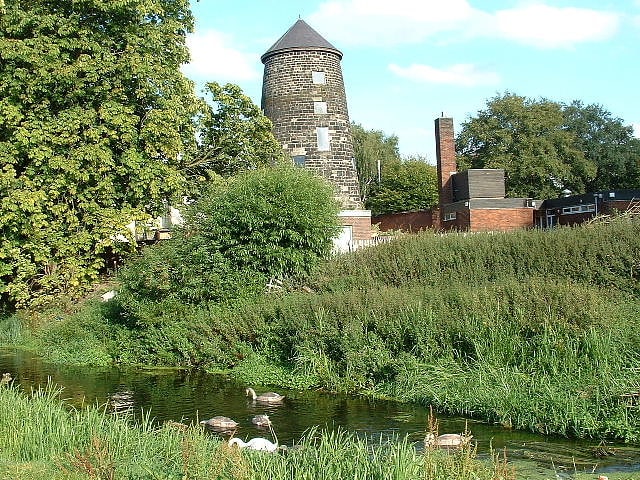
Tourist attraction in Stafford, England. The Broad Eye Windmill is an historic windmill in the county town of Stafford, Staffordshire, England. The windmill is currently home to Windmill Broadcasting, and is looked after by the Friends of Broad Eye Windmill.
It operated as a mill for 100 years, with the sails being removed in 1897. Over the next 100 or so years, numerous businesses operated from the Broad Eye Windmill, including a butchers.
The patron of the Broad Eye Windmill is actor, TV presenter and historian Tony Robinson.[8]
Address: 8 Broad Eye, ST16 2QB Stafford
Amerton Railway
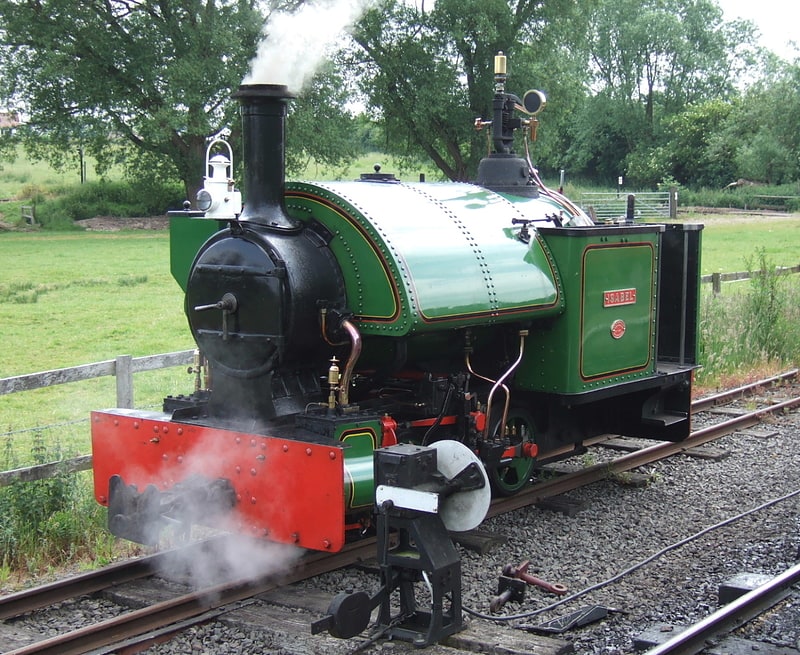
Railway. The Amerton Railway is a 2 ft narrow gauge heritage railway in the English county of Staffordshire. It is owned by Staffordshire Narrow Gauge Railway Limited, a registered charity, and operated by volunteers.
Construction of the railway started in 1990 in a field at the side of Amerton Working Farm. The first trains ran in 1992, but it was around 10 years later when the railway was completed as a full circle with two passing Loops. The collection of locomotives is primarily focused around locomotives that were either built or operated in Staffordshire.[9]
Address: Amerton Working Farm On the A518 Stafford - Uttoxeter Road, ST18 0LA Stafford
Radford Meadows

Radford Meadows is a nature reserve of the Staffordshire Wildlife Trust, on the southern edge of Stafford, in Staffordshire, England. The reserve is a floodplain situated between the River Penk to the west, and the Staffordshire and Worcestershire Canal.[10]